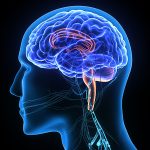
WHAT IS ARTHRITIS?
Inflammation involved in one or more of the joints is called arthritis. The main signs of arthritis are discomfort, swelling, and stiffness. The illness can affect any joint in the body, but it is particularly common in the knee. Knee arthritis will cause certain regular tasks, such as walking or ascending stairs, difficult to perform. For certain individuals, it is a significant source of missed work hours and a major disability. Osteoarthritis and rheumatoid arthritis are the common types of arthritis. All types of arthritis are treated in the best orthopedic hospital in Delhi.
OSTEOARTHRITIS
Osteoarthritis, also known as degenerative joint disease, is partially caused by degeneration of areas of the joint, such as cartilage, which grows with age. Increasing wear and breakdown of parts of the affected joint can result in reactive inflammation.
RHEUMATOID ARTHRITIS
Rheumatoid arthritis, though, is an autoimmune disease that destroys the usual joint lining of the body’s own defense. In this form of arthritis, inflammation in the lining of the joints and in the bones causes damage to the joints, particularly to the cartilage.
CAUSES OF ARTHRITIS
- injuries,
- infections,
- autoimmune conditions other than rheumatoid arthritis,
- abnormal limb alignment,
- abnormal deposits present in the joints, such as seen in gout.
SYMPTOMS OF ARTHRITIS
- Joint pain, rigidity or stiffness, arising in the mornings or after work.
- The mobility range in the joint or spine is limited
- Sensitivity and skin redness around the joint
- Joint movement grab or lock
DIAGNOSIS TEST FOR ARTHRITIS
The diagnosis test for arthritis performed in best orthopedic hospital in Delhi are
- Bone x-ray (radiography): A radiograph (x-ray) allows pictures of the inner structure using a minimal dose of radiation. X-rays demonstrate the contact of the bones and joints. They are useful for determining the amount of cartilage at the ends of the bones, bones that can contribute to arthritis, and modifications in the bones that can be caused by arthritis.
- CT scanning incorporates special x-ray devices and advanced computers to create several images of the body inside. CT is commonly used in people with arthritis to investigate gaps deep within the body that are impossible to test with conventional x-ray, mainly in the spine or pelvis.
- Musculoskeletal magnetic resonance imaging (MRI): MRI is capable of creating a clear image of the body using the strong magnetic field, radio frequency signals and a computer. The benefit of MRI is that all the bones and underlying tissues – cartilage, ligaments and internal joints – are seen. In the soft tissue of joints (which are invisible in X-ray) defects are often found in order to assess if medication is successful and helps to detect symptoms of illness.
- Musculoskeletal ultrasound: Ultrasound uses a small transducer (sample) as well as a gel to produce high frequency sound waves images of the body. Detailed photographs of the joint and soft tissue covering the skin may be given, mainly those near the skin surface.
TREATMENT FOR ARTHRITIS
The treatment of arthritis depends on the form, severity and position of the condition. Popular therapies for arthritis in best orthopedic hospital in Delhi are:
Drugs: Prescription and non prescription drugs can alleviate joint irritation and pain. Medicine available
Therapy: The range of motion and flexibility can be enhanced while physical therapy and exercise can enhance muscle and bone strength. Massage therapy, water treatment or orthopedic treatment are other choices.
Surgery: The most appropriate treatment choice for some patients could be joint reconstruction (arthrose plasticity) or joint fusion surgery.






